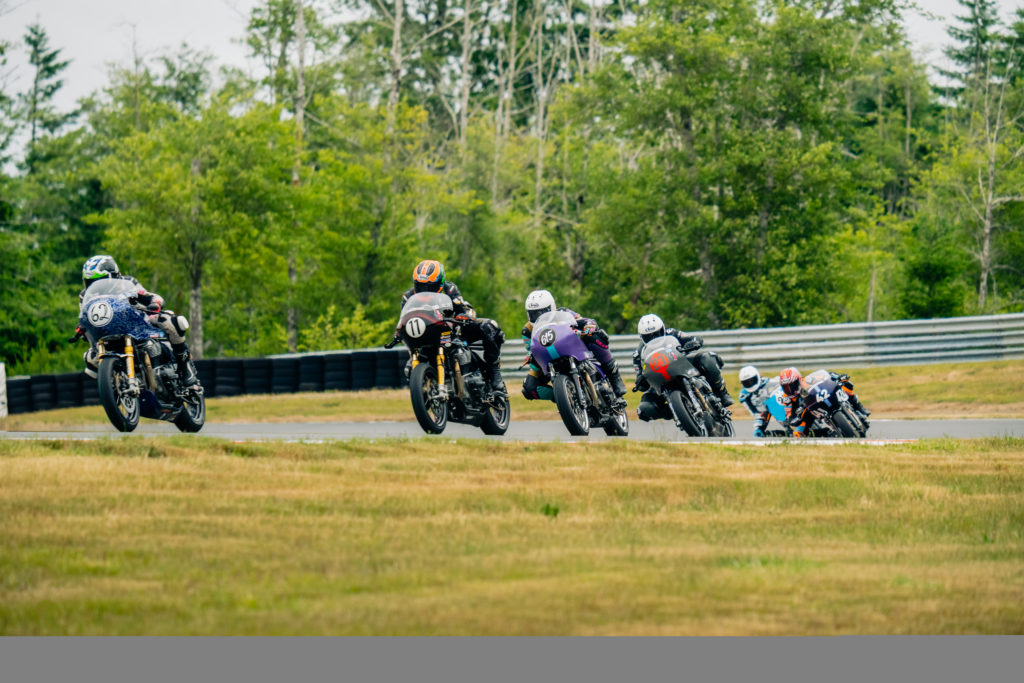
All Photos Courtesy of: Royal Enfield Build Train Race
Torqued Magazine Guest Column by Scott Rybarik
Racing in Its Purest Form – My First Year Managing the Royal Enfield Build. Train. Race. Team.
The journey began in February of this year when I received an unexpected call from an unknown number. Typically, I let such calls go to voicemail, subscribing to the belief that if it’s important, they’ll leave a message. Yet, on this particular day, something compelled me to answer.
“Hello, this is Scott,” I offered, my usual greeting for unfamiliar calls. “Hi, Scott, It’s Freddie Spencer. Do you have a few minutes to talk?” This caught me by surprise, for Freddie is a true legend in the world of motorcycle racing. For those unfamiliar, he’s a three-time world champion in grand prix motorcycle racing, what we now know as MotoGP. He remains the only rider to clinch both the 250cc and the 500cc class championships in a single year. Before Marc Marquez’s rise, he held the title of the youngest premier class race winner in grand prix, as well as the youngest world champion. In 1983, he secured the 500cc world championship at just 21 years old – a record that stood until 2013. To put it in perspective, it was akin to Michael Jordan phoning me and asking for a few moments of my time. Naturally, I said “yes,” but in retrospect, I wish I had humorously responded with “Freddie who?” Later I learned that Freddie possesses a fantastic sense of humor. He would have found this funny.
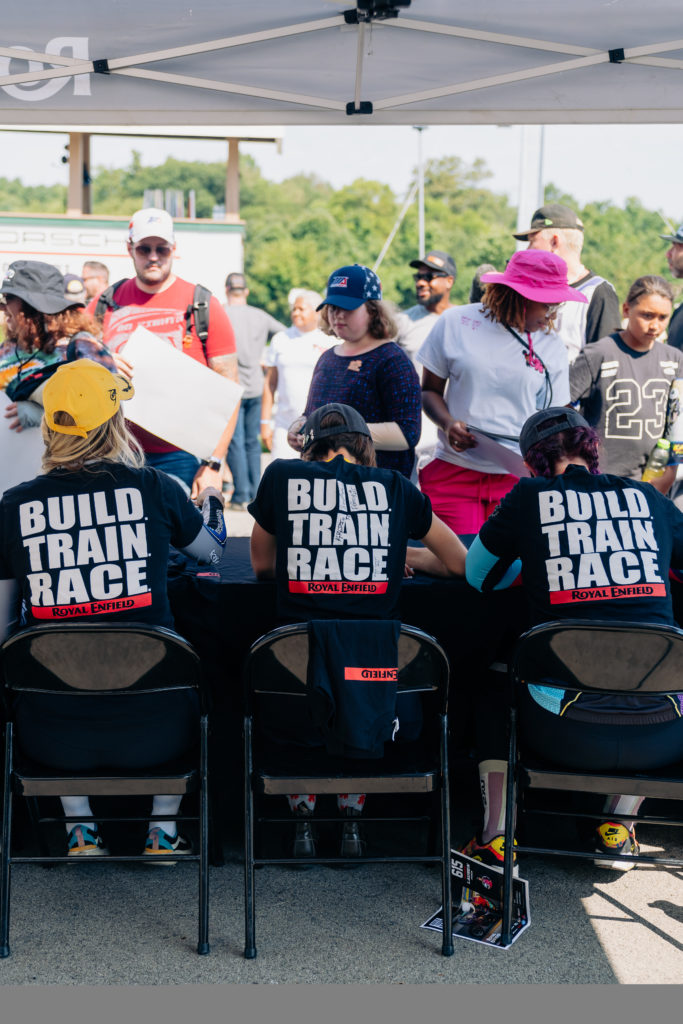
As our conversations unfolded, we found ourselves communicating daily, and I soon became a part of the team. We faced an immense challenge – starting nearly five months later than the previous year. The first order of business was to coordinate with our counterparts at Royal Enfield to procure bikes and parts. The world was grappling with supply chain issues, and we knew our parts would be arriving just in time, a risky situation where even a minor delay could derail our entire season.
Next on the agenda was rider selection. While Royal Enfield had extended invitations to some returning riders from the 2022 season, we were uncertain which ones would accept. As we screened candidates for 2023, we had to ensure a balance in terms of pace and experience with our returning riders.

The response exceeded our expectations. With only a one-week application window, we received 96 applications for six available seats. Each applicant submitted a roughly two-minute video alongside their written application. I was deeply impressed by the diverse and remarkable backgrounds of these women. Each member of our selection team individually reviewed the applications and maintained our “Top 10” choices in a shared document. We then convened as a team to advocate for our picks, outlining why we had selected them and what qualities we sought in building our 2023 team. Given that almost the entire management structure of Build Train Race was new for 2023, we also had to consider the culture we wanted to cultivate. In hindsight, it’s not surprising that many of our “Top 10” choices overlapped, making the next round of selection relatively straightforward. These ten candidates proceeded to interviews with the selection team via video conference. To my satisfaction, the riders represented themselves accurately in their applications and videos. Their interview personas closely mirrored their presentations in their applications. Time was of the essence, with March upon us and our bike-building deadline a mere month away. It was a grueling process, with numerous strong applications, but we successfully selected our six riders to complement the six returning riders, forming our 2023 team.
From that point, we were off to the races – both literally and figuratively. Offers were extended to the chosen riders, acceptances received, contracts finalized, and travel arrangements initiated. Freddie had a strong connection with a motorcycle shop owner in Texas, his new home, and the shop specialized in used bikes, eliminating any brand conflicts that might impede our work. Daniel and his team at Used Bikes Direct in Grand Prairie, Texas, proved invaluable partners, displaying remarkable cooperation and making their resources available.
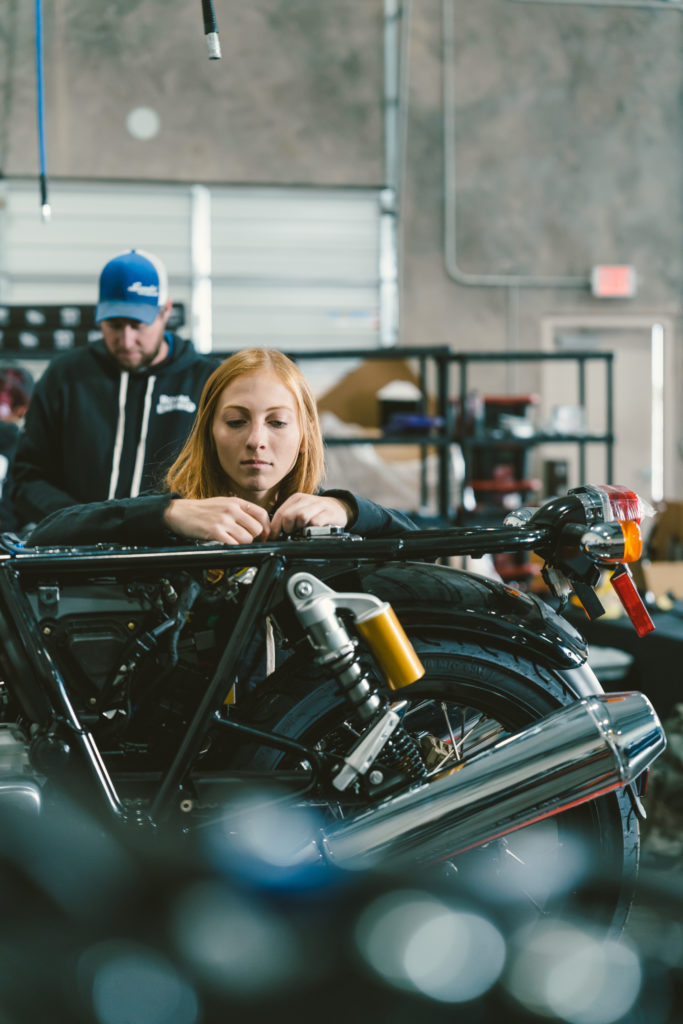
In early April 2023, the team convened in Grand Prairie, Texas, a momentous occasion marked by numerous dedicated professionals coming together to support our formative stages. The new riders for 2023 were each given a brand-new Royal Enfield Continental GT650 motorcycle, which they would transform into racing machines. Returning riders were offered new engines for their existing machines, should they deem them necessary. The build process was demanding and intense, with just four days allocated for assembly and a constant stream of parts arriving even as we worked. The days were long, brimming with tasks, and immensely gratifying. The riders rightly took pride in their completed bikes, but our Texas mission was far from over.
Given our compressed timeline, we remained in Texas and relocated to Motorsports Ranch, Cresson for two days of training. These two days were a whirlwind of riding, coaching, bike adjustments, and enhancements. Discussions delved into suspension dynamics and ergonomics. In the corporate world, we might liken this training to “drinking from a fire hose,” but that hardly conveys the torrent of new information our riders absorbed. While they all arrived with prior racing experience, only the returning riders possessed a sense of what professional racing truly entailed. Club racing typically unfolds from the back of a pickup truck or, in well-established club programs, a toyhauler. Professional racing, on the other hand, centers around semi-trucks with expansive canopies and hospitality areas. It was our first time setting up as a team, and for many riders, it marked the realization of the monumental task ahead. Our rider coaches comprised Freddie Spencer, Nick Ienatsch of the ChampSchool, and myself. Over these two days, the program mirrored a race weekend during the season: intense riding sessions, followed by debriefs, riding instruction, bike setups, maintenance tutorials, and hydration breaks. The value of rider coaching in racing cannot be overstated, even for the world’s best riders who continue to benefit from dedicated coaches. Therefore, rider coaching remains a cornerstone of the BTR program, a practice we are committed to sustaining. These two days sped by, but our team was left exhausted as we closed the door on the back of the truck, packed up, and prepared for the upcoming challenges. It had been an intense ten days together, and it was now time to shift our focus to the third component of the BTR acronym – Race.
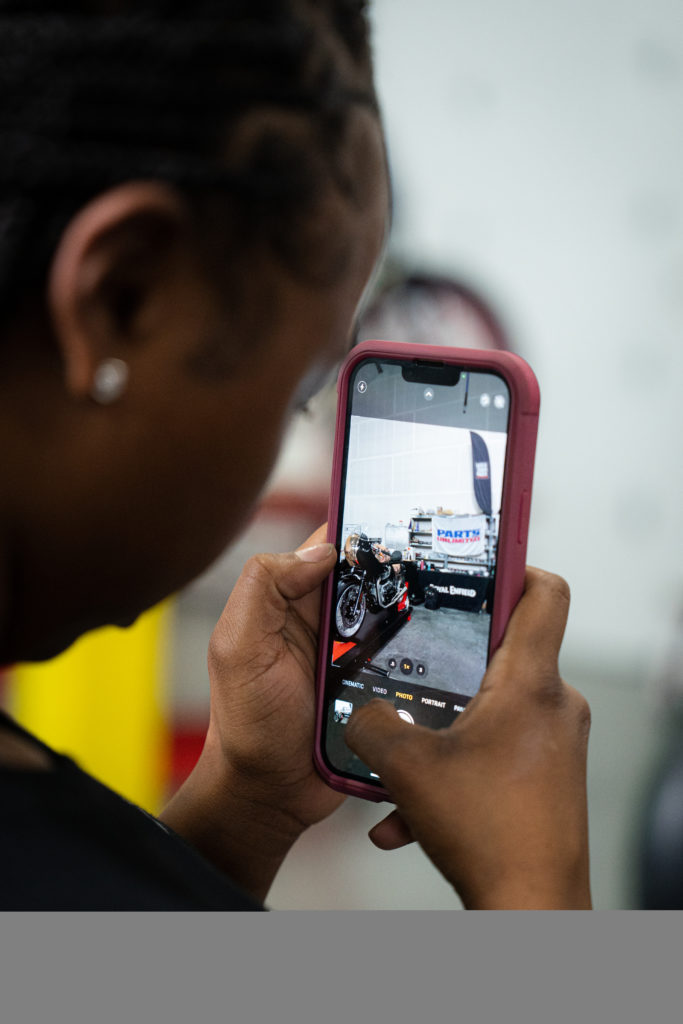
Round 1 was scheduled at Road America in Elkhart Lake, Wisconsin, from June 2-4, 2023. This event held significance for Royal Enfield, given its North American Headquarters in Milwaukee, Wisconsin. Road America, with its over four miles per lap and fast, flowing layout, stands as one of the country’s premier racetracks. Furthermore, it had recently undergone resurfacing – the first since 1995 – resulting in the smoothest asphalt I’ve ever seen. Each race weekend followed a predictable pattern: Load-In, Bike Maintenance, Track Walk, Practice, Qualifying, Race, and Load-Out. Racing is inherently linear; there’s no other way to approach it.
Our rounds encompassed two races at each event, except for one due to scheduling conflicts, resulting in our participation in four rounds and seven races in total. If you’ve had the chance to watch these races, you already know the outcome. If not, I strongly encourage you to do so – I’ll provide some YouTube links below.
Yet, what doesn’t make it to the highlight reel are the moments in between races, both at the track and in the weeks between rounds. Each round presented its unique challenges: logistical hurdles involving the parts and supplies crucial for racing, issues with one or more rider’s bikes, or unexpected safety equipment complications. The latter surfaced dramatically at our second round of the year, hosted at Ridge Motorsports Park in Washington State. As the qualifying session’s final call approached and the riders readied themselves to leave the tent, a rider experienced a catastrophic zipper failure at the front of her suit, causing it to unzip entirely. This zipper is the primary way the protective suit is held on the rider, making it an issue that could not be ignored. She signaled for assistance, prompting one of our mechanics and myself to spring into action. The zipper had derailed, meaning the slider was no longer connecting both sides to fasten it. Recognizing the severity of the situation, I quickly resorted to “Plan B” – locating another suitable suit for her to wear. I hurried to another team known for having spare suits, acquired one, and returned to our pit area. Meanwhile, our mechanic, Patrick, displayed remarkable resourcefulness, employing safety wire and ingenuity to mend the damaged suit. He successfully restored it just as I presented the backup suit to our rider. She chose to return to her original suit, re-dressed in it, and was pushed out in time to qualify. While not every challenge was as dramatic or adrenaline-pumping, there was always something to address at each round – under the tent, off the track. We constantly worked to minimize these adrenaline spikes, recognizing that challenges are inherent in racing. Sometimes riders would crash, and we’d have limited time to effect repairs before their next session. Worse yet, once the race weekend was in full swing, we lacked a reliable means to test repairs before the bike returned to the track for a crucial session. This is why we maintained a team of three professional mechanics under the tent, who served as educators and mentors to the riders, as well as assisting with repairs when needed. Their presence was felt from the beginning of the season, assisting with the bike build and remaining onboard throughout the racing season. Trust was the bedrock of this relationship – the rider needed to believe in the mechanics’ qualifications and the genuine care they invested in their work on these bikes.
Ultimately, this program revolves around relationships. Royal Enfield’s connection with the motorcycling community stands atop the list, serving as the program’s raison d’être. Our team’s relationship with MotoAmerica, the platform for our racing endeavors, is crucial. Yet, the most heartwarming connection of all is the bond between our riders and the fans. We hope you’ll become one of them.
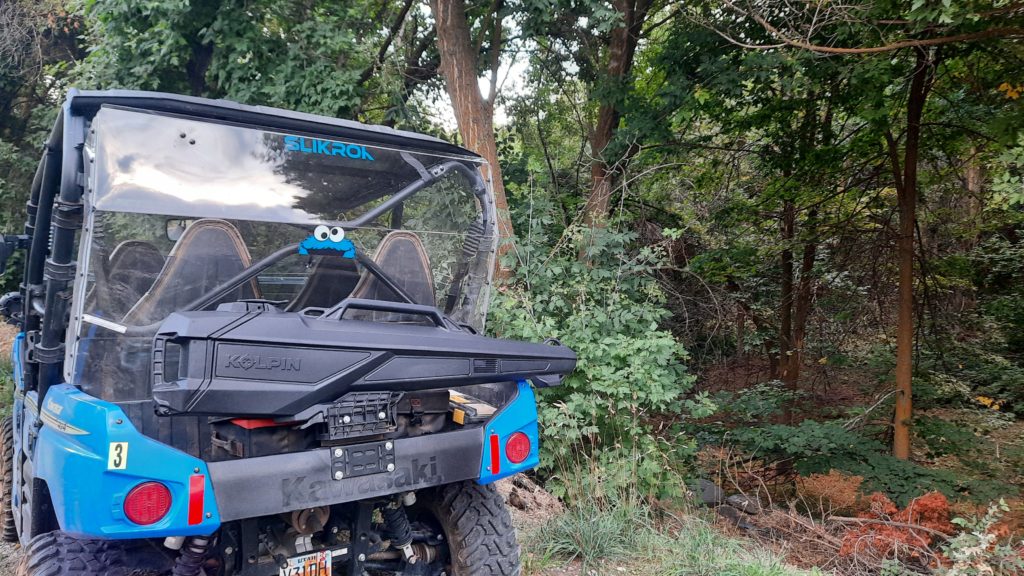

Hi Scott, it’s Roger Bennett.
I loved your article, I love the insight into the program. I am very pleased to see how the season went for all your ladies. I am excited and looking forward to 2024 season and I will be following this program I’ll season long in 2024. In my opinion it was a damn fine job Freddie, Nick and you did with this program.
Impressive damn fine job.
Thank you so much for kind words. Stay tuned for more for sure.
Roger! Amazing to hear from you, as you are one of my heroes!
Thanks for following our racing and series this year. It’s a complete honor to work with a team that has this level of quality people associated, and this level of commitment from our primary sponsor, Royal Enfield.
I hope that we put on an even better show for you and the rest of the fans in 2024 (and beyond)!
-scott
Amazing season, can’t wait for next year!
I look forward to an in depth exploration of the modifications necessary to turn mild mannered street bikes into racing machines. I’m sure it wasn’t an easy task.
TK4- Thank you for the suggestion, I’ll consider doing an article on it, but for now here is the basic info.
The Royal Enfield Continental GT650’s we start with are as they come from the showroom floor (or crate, in our case). The BIGGEST change we make is moving from the stock 18″ rims, to 17″ to accommodate the Sportbike tires we use in the series, as provided by Dunlop. For 2023 we used their new Q5 hyper sport / trackday tire and the team couldn’t have been more pleased.
We also added suspension from Ohlins and braking components from Accossato. These two changes dramatically affected the bikes in a positive. way.
From there we used Harris Performance rear sets and clip-on handlebars and added an exhaust made for us by S&S Racing.
Last, but not least, we remove some unnecessary parts of the rear frame (a big part of the passenger sub-frame, the left side exhaust hanger (our exhaust is right side only) etc. as a way to reduce weight. Then we add a cafe style seat unit, a classic upper fairing and fairing stay and bellypan.
It sounds simple, but the execution is challenging. Each of the riders is the lead mechanic on their own bike, and they lead the effort to convert it with help from our talented team of engineers and mechanics.
Thanks for reading – the next article is set to publish soon and I hope you also enjoy it!
Great article, really gives a glimpse of all the behind the scenes effort and collaboration that goes into making this program happen! It’s really grown so fast in the last few years and so exciting to see the doors it’s opened for female riders!
I thoroughly enjoyed every word, sentiment and insight relayed within your article, Scott! Thank you, for all that you do for others!